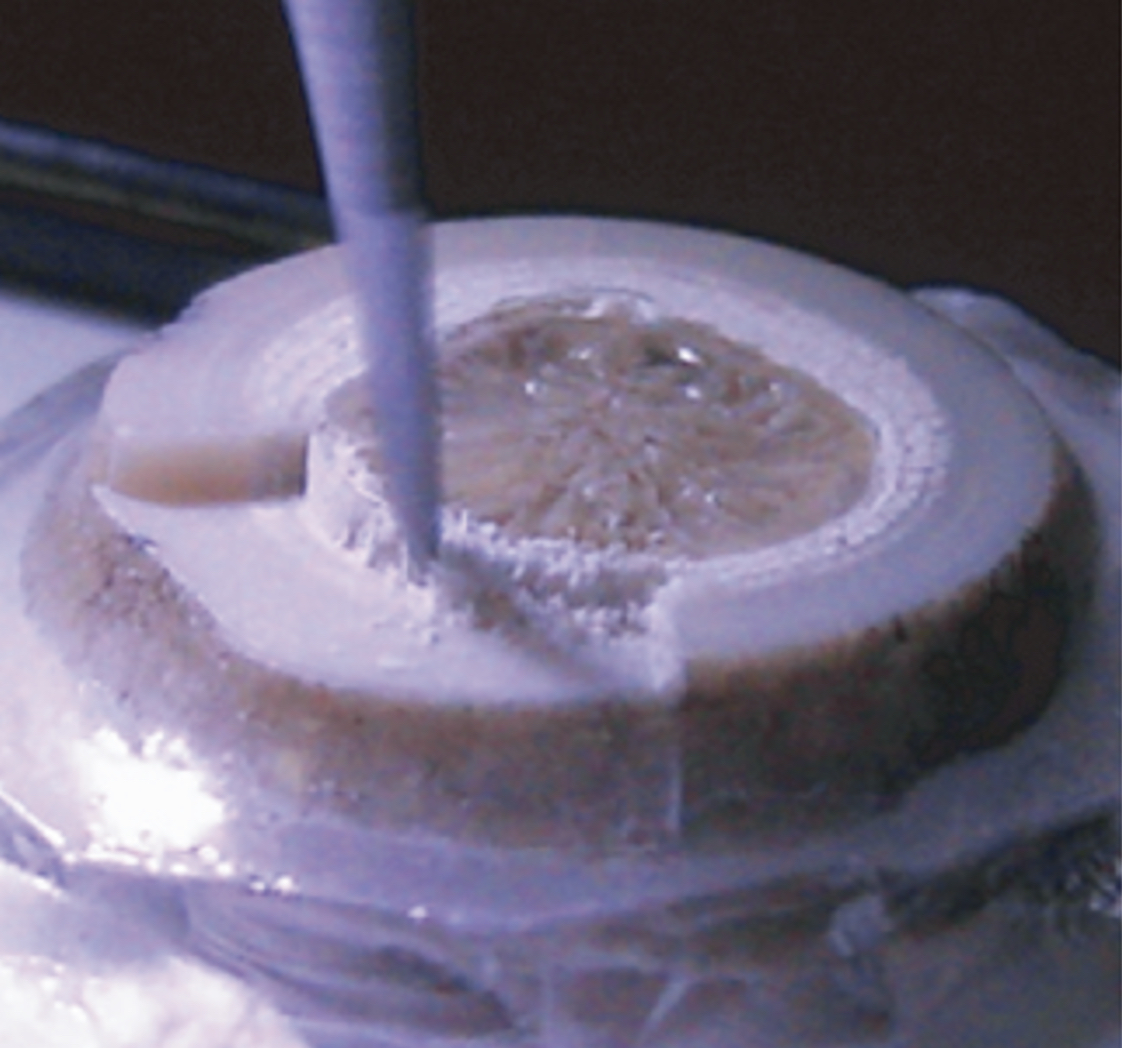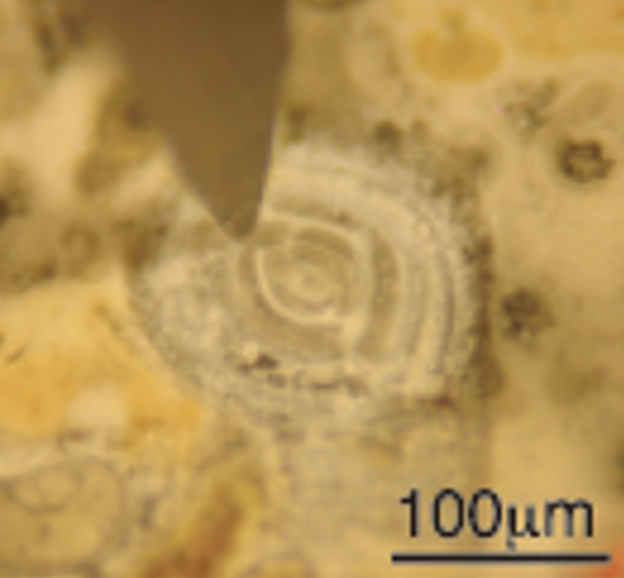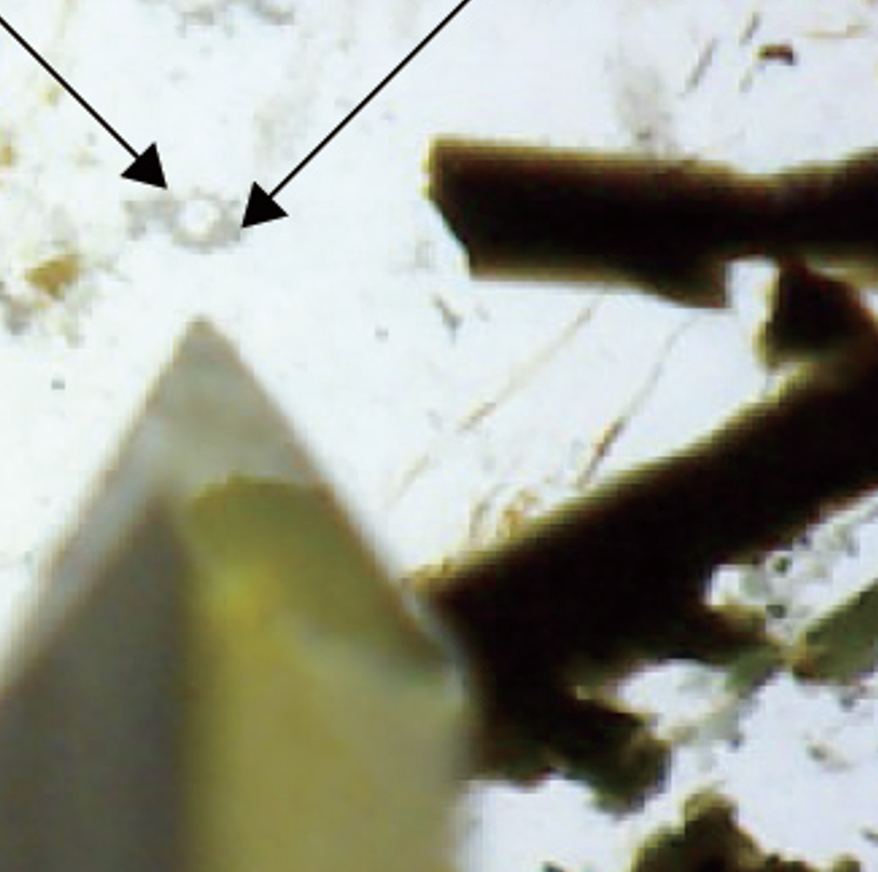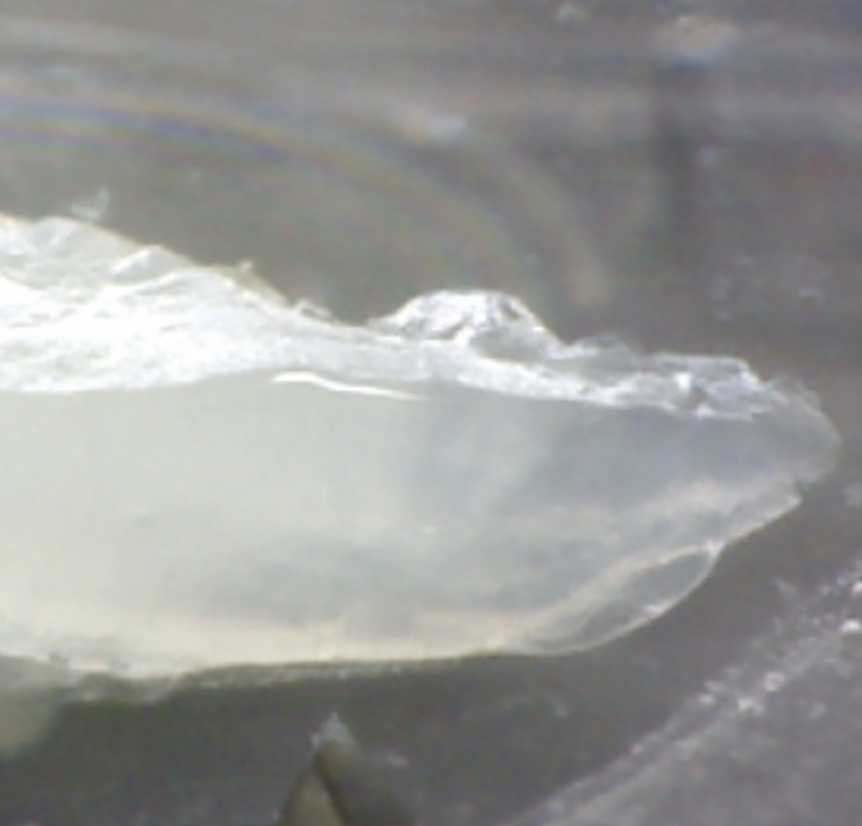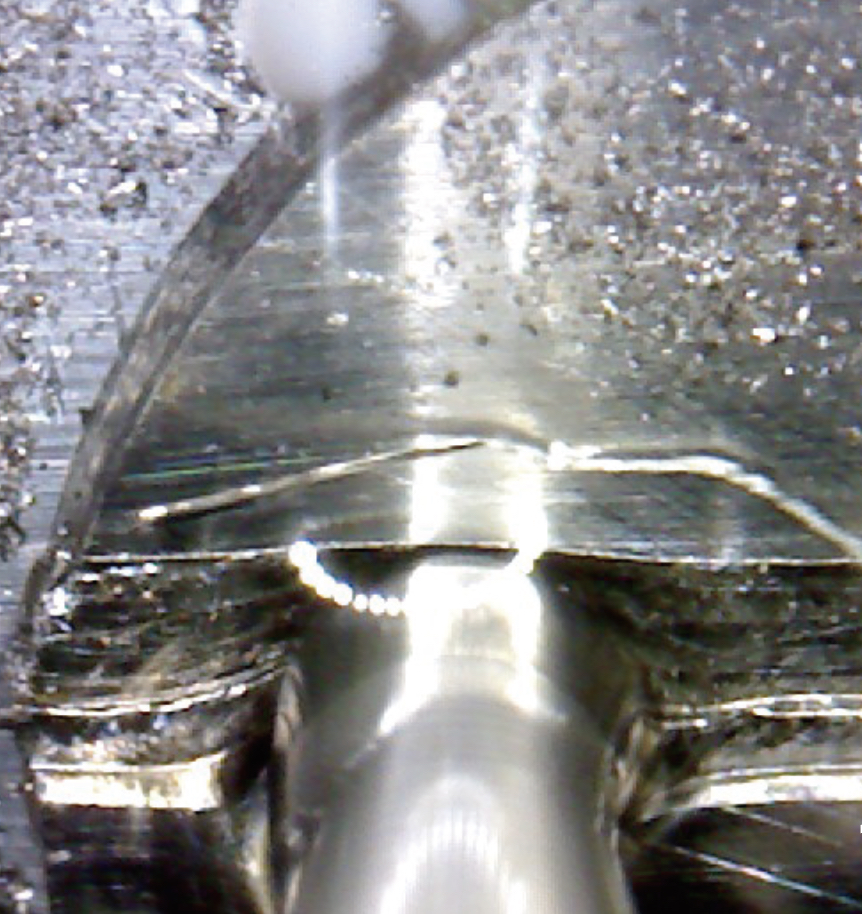Chapter 2: GEOMILL326 first announced in public (2005)
In 2005, the results of the development of the micromill system were presented at an academic conference.
Dr. Sakai recalls, "In my presentation I just mentioned that I'd made this machine in my last two slides, but as a result of this there was an avalanche of questions. People wanted to know all the details of the machine and if they could use it... and as a result of that a great number of collaborative projects began.

One example is the analysis of coral skeletons. Coral creates the skeletons of calcareous. By analyzing their makeup it's possible to determine things like the temperature of the water at the time that they were created. However, because the annual growth rings are not straight, there's a limit to the accuracy of the analysis you can do using a lathe that can only cut in straight lines. Using the micromill system, you can can cut along the growth rings with an accuracy in the μm range, meaning you can get much more precise data on things like the change in water temperature.
Besides corals, it's also possible to accurately cut shells and stalactites, sediments, fossils and rock samples. Researchers, loving the the high precision and convenience of our prototype, started asking if we weren't going to start producing it for commercial sale. This was something we hadn't thought of - we hadn't even registered the patent. Needless to say, we soon went about registering the patents for both the system itself and and the manner in which it worked.
Even if individuals can use it themselves, when it becomes a commercial product the drill head needs to be interchangeable. When a specialist was asked to take a look at making the head interchangeable, he was lost for words when he saw the way in which the device was wired. Still, we gradually managed to make improvements based on the recommendations of various researchers, and thanks to our close partnership with Izumo Web in April 2008 we were finally able to release a robust production model.

